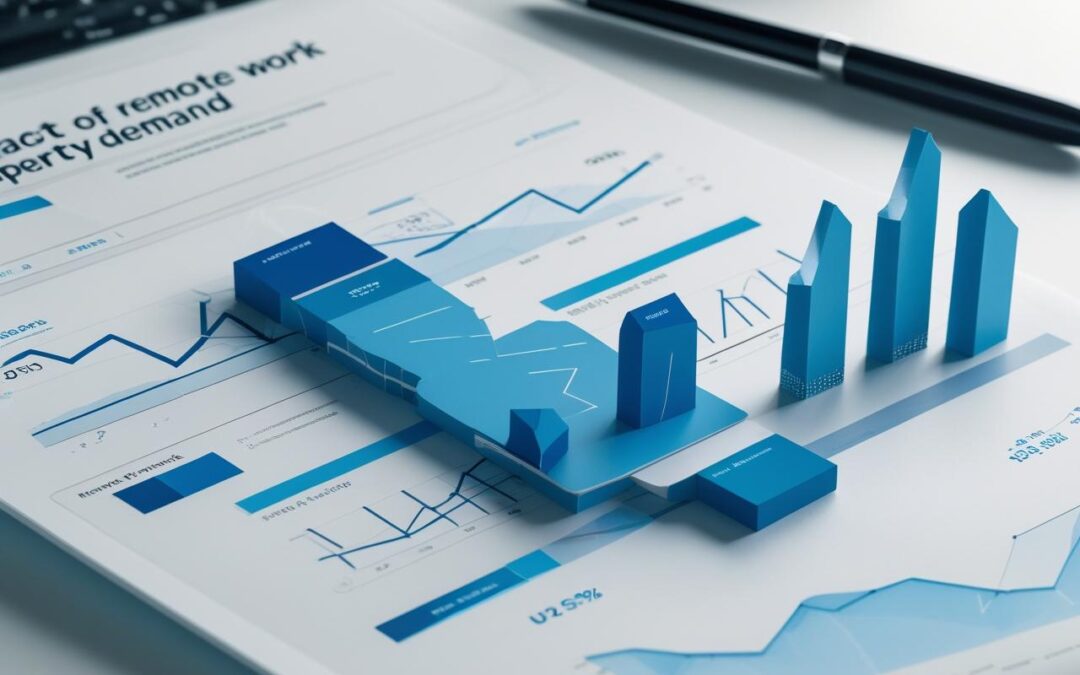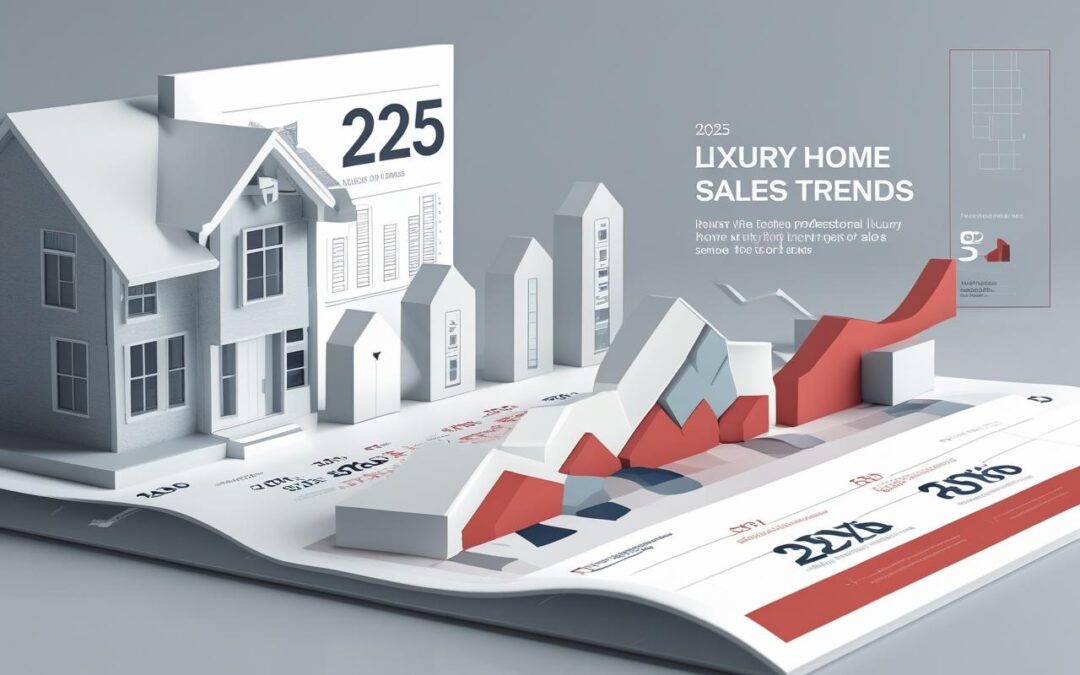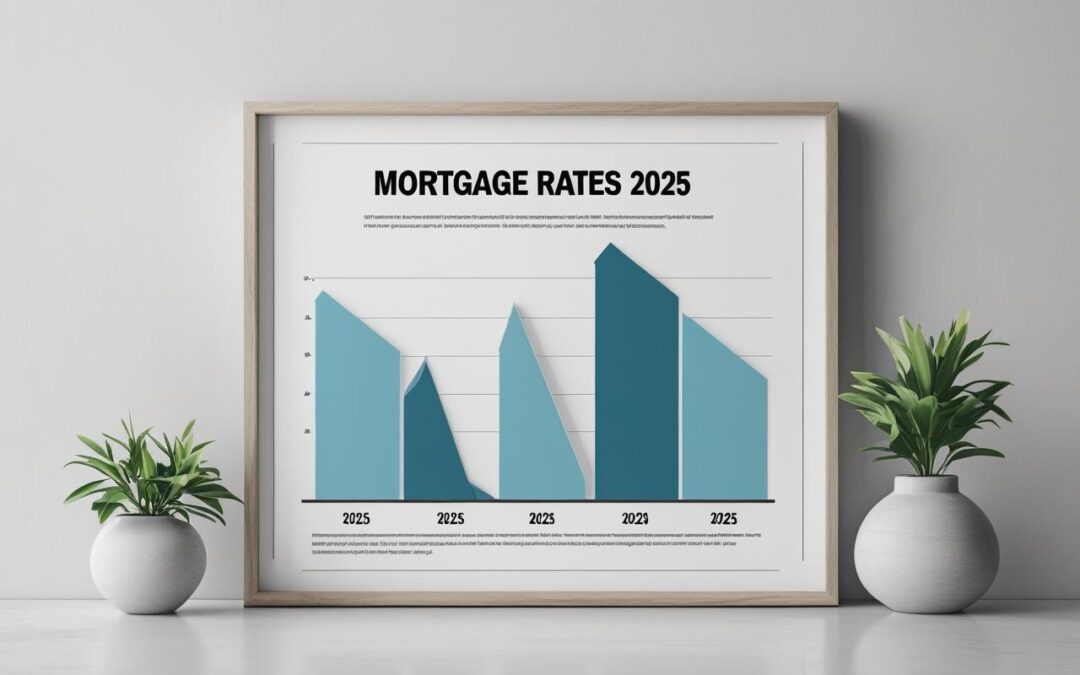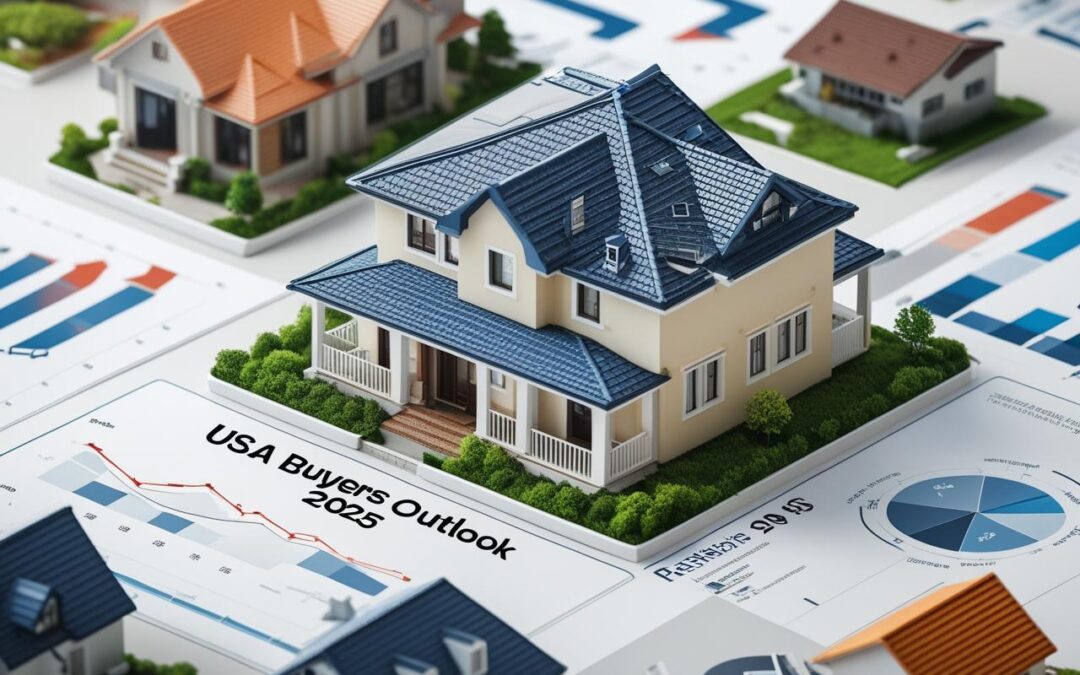
by support | Aug 2, 2025 | Blogs
In the past few years, remote work has transformed from a temporary pandemic solution into a permanent lifestyle for millions of Americans. This shift has not only changed daily routines but has also reshaped the USA property market in significant ways.
1. Moving Away from Big Cities
Before remote work became common, living close to offices in major metropolitan areas was a priority. High-rise apartments in cities like New York, San Francisco, and Chicago were in high demand. But now, many professionals no longer need to commute daily. This freedom is driving people toward suburban and rural areas where homes are larger, greener, and more affordable.
2. Bigger Homes for Better Workspaces
Remote workers are looking for properties with extra rooms or dedicated office spaces. A spare bedroom, a finished basement, or even a converted attic can now be a major selling point. Open floor plans are still popular, but privacy for video calls and meetings has become equally important.
3. Rising Demand in Secondary Markets
Cities like Austin, Boise, Raleigh, and Nashville are seeing rapid growth because they offer lower costs of living and a high quality of life. Buyers are choosing these locations over expensive coastal cities while still enjoying good internet connectivity and urban amenities.
4. The Role of Technology in Home Buying
Remote work goes hand in hand with remote home buying. Virtual tours, 3D walkthroughs, and online mortgage applications are making it easier for buyers to purchase property without ever stepping inside before closing. This digital transformation is widening the buyer pool and speeding up transactions.
5. Long-Term Impact on Real Estate Prices
As more people relocate to smaller cities and rural towns, property values in those areas are climbing. While this is great for current homeowners, it can make affordability a challenge for local residents. Meanwhile, some high-priced urban markets are experiencing slower growth or even slight declines.
Final Thoughts
The remote work revolution has made location more flexible than ever before. For real estate investors, agents, and buyers, understanding this trend is crucial to making smart property decisions in 2025 and beyond. Whether you’re seeking a spacious suburban home or a quiet countryside retreat, the shift toward flexible work is reshaping the American housing dream.

by support | Aug 2, 2025 | Blogs
The U.S. luxury real estate market in 2025 is redefining what “high-end living” means. With changing buyer priorities, evolving design trends, and strong demand from both domestic and international investors, luxury homes are no longer just about size—they’re about lifestyle, sustainability, and exclusivity.
1. Demand for Sustainable Luxury
We’re seeing a major shift toward eco-friendly luxury homes. Buyers in 2025 want energy-efficient designs, solar-powered systems, and smart home technologies that reduce their carbon footprint—without compromising on elegance. Properties featuring LEED certification and renewable energy setups are commanding premium prices.
2. Location is More Lifestyle-Focused
While prime neighborhoods like Beverly Hills, Palm Beach, and Manhattan remain hotspots, luxury buyers are now exploring lifestyle-rich cities such as Austin, Nashville, and Scottsdale. These locations offer privacy, cultural richness, and a balance between urban conveniences and nature.
3. Tech-Integrated Living
Smart home technology is no longer optional—it’s expected. From AI-powered security systems to climate-controlled wine cellars and app-controlled lighting, tech integration is enhancing convenience and security in luxury living.
4. Wellness and Health Amenities
Post-pandemic lifestyle changes have influenced luxury home designs. Spa-style bathrooms, in-house gyms, yoga studios, and even personal medical rooms are in demand. Wellness-focused architecture, with better air filtration and natural lighting, is a growing priority.
5. Investment-Driven Purchases
Many high-net-worth individuals are buying luxury properties as part of their investment portfolios. With U.S. property values expected to rise steadily through 2025, luxury homes in prime markets are being seen as both lifestyle assets and financial instruments.
6. International Buyers Making a Comeback
After a brief slowdown, international investors—especially from Asia, the Middle East, and Europe—are back in the U.S. market. The dollar’s stability, coupled with the prestige of owning property in America, continues to drive cross-border interest.
Final Thoughts
The luxury home sales trends in the USA for 2025 are shaped by innovation, lifestyle, and investment potential. Whether you’re a buyer, seller, or investor, staying informed about these shifts can help you make the most of opportunities in this competitive yet rewarding market.

by support | Aug 2, 2025 | Blogs
Mortgage rates have always been a driving force in the housing market, and 2025 is no exception. Whether you’re a first-time buyer, a seasoned homeowner, or a real estate investor, understanding how interest rates will affect property prices and buyer behavior can make a big difference in your financial decisions.
Where Are Mortgage Rates Headed in 2025?
Experts predict that mortgage rates in 2025 will remain higher than the historically low rates we saw in 2020–2021, but slightly lower than the peaks of 2023–2024. Economic factors such as inflation control, Federal Reserve policies, and global market trends will play a major role.
If inflation continues to cool, we could see rates stabilize or even dip slightly in the second half of 2025, creating a potential window of opportunity for buyers.
Impact on Homebuyers
Affordability Challenges: Higher rates mean higher monthly payments, which can push some buyers out of the market.
Shift Toward Smaller Homes: Many buyers may opt for smaller or more affordable properties to keep payments manageable.
Increased Competition When Rates Drop: Any rate drop in 2025 could trigger a surge in buyer demand.
Impact on the Housing Market
Slower Price Growth: With borrowing costs higher, price growth may be moderate, giving buyers more negotiation power.
Longer Time on Market: Homes may take longer to sell, especially in higher price brackets.
Opportunities for Cash Buyers: Those who can avoid mortgages may find more bargaining power.
Tips for Buyers in 2025
Lock in Rates Early: If you find a good mortgage rate, consider locking it in before rates rise again.
Improve Your Credit Score: A higher score can mean a lower interest rate, saving you thousands.
Consider Adjustable-Rate Mortgages (ARMs): If you plan to sell or refinance within a few years, an ARM could be more affordable.
Negotiate Closing Costs: With a slower market, sellers may be more open to covering part of your expenses.
Final Thoughts
Mortgage rates in 2025 will directly shape the housing market, influencing everything from buyer demand to property values. While higher rates may slow the market, they can also create opportunities for strategic buyers who know how to navigate the changes.
If you’re planning to buy or invest in 2025, keep a close eye on mortgage trends, and be ready to act when the timing feels right.

by support | Aug 2, 2025 | Blogs
The U.S. real estate market in 2025 is full of opportunity for smart investors. While some cities are cooling, others are heating up with strong job growth, rising populations, and solid rental yields. If you’re looking to invest for steady cash flow and long-term appreciation, here are the 10 best U.S. cities to buy property in 2025.
1. Austin, Texas
Austin is still the king of tech-driven growth. With major companies like Tesla and Apple expanding here, property prices and rents keep rising.
Why Invest? Booming tech sector, cultural lifestyle, and high rental demand.
2. Raleigh, North Carolina
The Research Triangle makes Raleigh a hub for innovation and education. Home prices are still lower than national averages.
Why Invest? Affordable entry cost, stable appreciation, and job growth.
3. Nashville, Tennessee
Music City isn’t just for artists—it’s now a thriving business and healthcare hub.
Why Invest? Strong tourism, high rental occupancy, and property appreciation.
4. Phoenix, Arizona
With over 200 days of sunshine, Phoenix attracts remote workers and retirees, pushing demand for housing.
Why Invest? Rising values, low taxes, and expanding infrastructure.
5. Tampa, Florida
Tampa’s mix of business, beaches, and tax benefits makes it an investor favorite.
Why Invest? No state income tax, population growth, and tourism boost.
6. Dallas–Fort Worth, Texas
DFW is a top choice for both residential and commercial investments. The metro keeps expanding with new businesses.
Why Invest? Strong job market, affordable suburbs, and high rental yields.
7. Charlotte, North Carolina
One of America’s fastest-growing metros with a booming finance industry.
Why Invest? Consistent demand for housing and low unemployment.
8. Denver, Colorado
Denver offers both outdoor beauty and a competitive job market.
Why Invest? High appreciation rates and premium rental demand.
9. Orlando, Florida
Theme parks, tourism, and tech—Orlando’s economy is diverse and growing.
Why Invest? Year-round rental demand and affordable housing.
10. Boise, Idaho
Boise’s transformation into a hotspot has been incredible, attracting professionals and families alike.
Why Invest? Affordable housing and rapid appreciation.
Final Tip for Investors
In 2025, the best property investment isn’t just about price—it’s about future growth potential. Look for cities with job growth, infrastructure projects, and lifestyle appeal.
💬 Which of these cities would you invest in? Share your thoughts in the comments!

by support | Aug 2, 2025 | Blogs
The U.S. real estate market has always been a mix of opportunities and challenges, but 2025 is shaping up to be a particularly interesting year for buyers. Whether you’re looking for your first home, upgrading to a bigger space, or exploring investment opportunities, understanding the trends ahead can make a big difference in your decision-making.
In this article, we’ll dive into what you, as a buyer, can expect from the USA Real Estate Market Outlook 2025 — from housing prices to interest rates, and everything in between.
1. Housing Prices: Slowing Growth, Not a Drop
Over the past few years, U.S. housing prices saw record-breaking increases. While 2024 began to show signs of cooling, experts predict that 2025 will bring slower price growth rather than steep declines. For buyers, this means more breathing room to find the right property without the panic of bidding wars — but prices will still remain high in many urban areas.
2. Mortgage Rates: Stabilization Ahead
One of the biggest factors for homebuyers in 2024 was the spike in mortgage interest rates. The good news? Analysts expect rates to stabilize in 2025, potentially hovering between 5%–6%. While this is still higher than the ultra-low rates of 2020–2021, it’s more manageable compared to last year’s peaks. Buyers who plan ahead and shop for the best loan options can still secure favorable deals.
3. Inventory Levels: Gradual Improvement
A major challenge for buyers has been the low housing inventory. In 2025, new construction projects and more homeowners willing to sell could slowly boost supply. This increase will offer buyers more choices and reduce the intense competition we’ve seen in recent years.
4. Regional Trends: Shifting Hotspots
While big cities like New York, Los Angeles, and San Francisco remain expensive, more buyers are turning to secondary markets like Austin, Nashville, and Tampa. These cities offer a balance of affordability, job growth, and lifestyle perks, making them attractive options for relocation or investment.
5. Investment Opportunities: Steady Demand for Rentals
Rental properties will continue to see strong demand in 2025, especially in markets with growing job sectors and university towns. For buyers interested in real estate investing, this could be a good year to purchase rental units while financing conditions are relatively stable.
6. Buyer Tips for 2025
Get pre-approved early – This strengthens your negotiation power.
Consider up-and-coming areas – You might find better value and future growth.
Lock your mortgage rate – If rates start to rise again, you’ll be protected.
Work with a local real estate agent – They know the market nuances best.
Final Thoughts
The USA Real Estate Market Outlook 2025 points toward a more balanced, less frantic market compared to recent years. For buyers, this could be the ideal time to make a move — provided you plan carefully, stay informed, and keep your long-term goals in mind.
If you’ve been waiting for the right moment to buy, 2025 might just offer that sweet spot between affordability and opportunity.

by support | Aug 2, 2025 | Blogs
Buying your first home is a milestone — exciting, emotional, and yes, a bit overwhelming. But here’s some good news: if you’re purchasing your first property in 2025, First-Time Buyer Tax Credits in the USA could help you save big. These programs are designed to ease your financial burden, giving you more breathing room as you step into homeownership.
In this guide, we’ll break down what the tax credits are, how you can qualify, and the smart ways to maximize your savings.
What Are First-Time Buyer Tax Credits?
First-time buyer tax credits are incentives offered by the U.S. government to help reduce the overall cost of buying your first home. Unlike deductions, which reduce taxable income, tax credits directly lower the amount of tax you owe — meaning more money stays in your pocket.
For 2025, several federal and state programs aim to encourage homeownership, making it more affordable for first-time buyers.
Why 2025 Is a Great Year to Buy Your First Home
New tax credit proposals in Congress could further boost savings.
Many states are increasing incentives to stimulate the housing market.
Mortgage rates are predicted to stabilize, creating a favorable buying environment.
If you’ve been waiting for the right time, 2025 may be your golden opportunity.
Key Federal Tax Credit Options in 2025
First-Time Homebuyer Credit (Proposed Revival)
Lawmakers are discussing a tax credit of up to $15,000 for eligible first-time buyers. If passed, it could apply directly to your tax return, lowering your overall tax bill.
Mortgage Credit Certificates (MCCs)
Many states offer MCC programs that let you claim a portion of your annual mortgage interest as a tax credit — potentially saving you thousands over the life of your loan.
Energy-Efficient Home Credits
If you install qualifying eco-friendly upgrades, you might be eligible for additional credits, making your new home both affordable and sustainable.
Eligibility Requirements
While requirements vary by program, you typically need to:
Be purchasing your first home (or not have owned one in the past three years).
Meet income limits set by the program.
Use the home as your primary residence.
Complete any required homebuyer education courses.
How to Maximize Your Savings
Check both federal and state programs — some states offer extra incentives.
File your taxes carefully or work with a professional to claim every eligible credit.
Time your purchase to align with new legislation if major credits are expected soon.
Combine credits and deductions for maximum benefit.
Common Mistakes to Avoid
Not researching local programs — state and city-level incentives can be overlooked.
Missing deadlines for filing claims.
Assuming you’re ineligible without checking updated requirements.
Final Thoughts
Owning your first home in the USA doesn’t have to drain your savings. With First-Time Buyer Tax Credits USA 2025, you can enjoy significant financial relief while stepping confidently into your new chapter. A little research and smart timing could save you thousands — money you can put toward furnishing, renovations, or simply building your future.
If you’re ready to make your move in 2025, now’s the time to explore your options and prepare for a purchase that’s as financially smart as it is exciting.






